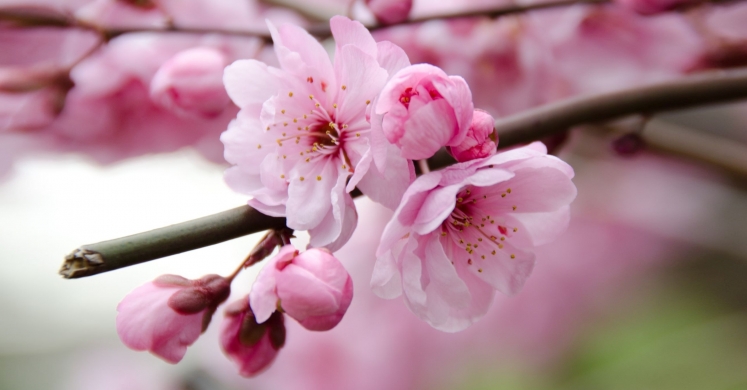Blog

#bioPGH Blog: Fruiting Trees
 A resource of Biophilia: Pittsburgh, #bioPGH is a weekly blog and social media series that aims to encourage both children and adults to reconnect with nature and enjoy what each of our distinctive seasons has to offer. From the best times to plant seasonal flora and enjoy their peak blooms, to astronomical events and creatures to keep an eye and ear out for, Phipps will keep you in the know with what’s going on in our environment!
A resource of Biophilia: Pittsburgh, #bioPGH is a weekly blog and social media series that aims to encourage both children and adults to reconnect with nature and enjoy what each of our distinctive seasons has to offer. From the best times to plant seasonal flora and enjoy their peak blooms, to astronomical events and creatures to keep an eye and ear out for, Phipps will keep you in the know with what’s going on in our environment!
Have you entered our #bioPGH Earth Day Discovery Contest yet? Get the guidelines and head over to Instagram to add to the conversation!
Whether tending to your own yard or simply trekking through town, you’ve probably noticed a whole slew of bushes and trees coming into bloom over the last few weeks. Fluffy, white and pink blossoms bounce in the breeze and tiny circular petals float through the air like a pleasant snow shower. While several of these flowering trees produce blooms that look very similar to one another, they actually represent several different species of tree in the Rosaceae, or rose, family. In fact, unless you are able to take a closer look at the flowers, leaves, bark and branching patterns of the tree, it is often very difficult to distinguish whether you are looking at a cherry, peach, plum, nectarine, apricot or almond tree of the genus Prunus; an apple tree of the genus Malus; or a pear tree of the genus Pyrus. Why do these trees that produce such different foods possess such similar flowers? In order for these trees to produce fruit and ultimately the seeds that will propagate future trees, their flowers must be pollinated. And, in order to attract the pollinators, the trees must produce a flower that is both visually appealing and aromatic. Due to the relation of each species of tree to one another in their respective genera, and also the selective pressures placed on these particular flowering trees by pollinators during their evolution, each species of tree produced flowers similar in appearance to one another.
Connecting to the Outdoors Tip: Did you know, that of the one-hundred major American staple crops grown across the country, seventy require pollination by bees in order to produce the fruits and seeds for consumption by both humans and other animal species, this includes all of the edible fruits produced by the Rosaceae family! Next time you are out and about, consider putting on your botanist hat and try to identify the species of flowering trees that you encounter. Try looking for plant patterns specific to the rose family. Document flowers; leaf shapes, edges and vein patterning; and even scents and try to identify the type of fruit to come. With all of this newfound information, consider helping little ones create their very own set of tree identification cards that highlight each distinguishing feature of the plant, examples of which can be found here. While several fruit producing trees exist across the globe, not all of them are safe for human consumption. If you’re curious about fruiting trees and would like to learn more about which species are edible versus ornamental, drop by the Center for Sustainable Landscapes at 5:30 PM on Thursday, April 7, for this month’s Biophilia Network meeting featuring Adam Haritan, foraging instructor and founder of Learn Your Land! Adam’s presentation will discuss the role wild food foraging plays today in providing the missing critical link connecting humans to their land, and will introduce the concept of foraging for food and medicine as one of the easiest and most effective ways to solidify this lasting connection.
Additional Resources:
Patterns of the Rose Family - Wildflowers and Weeds
How Can Leaves Identify a Tree? - Trees and Leaves
Edibility of Ornamental Fruit Trees - Horticulture and Home Pest News
Edible Ornamentals - PhigBlog
Biophilia Network - Phipps Conservatory and Botanical Gardens
Learn Your Land
